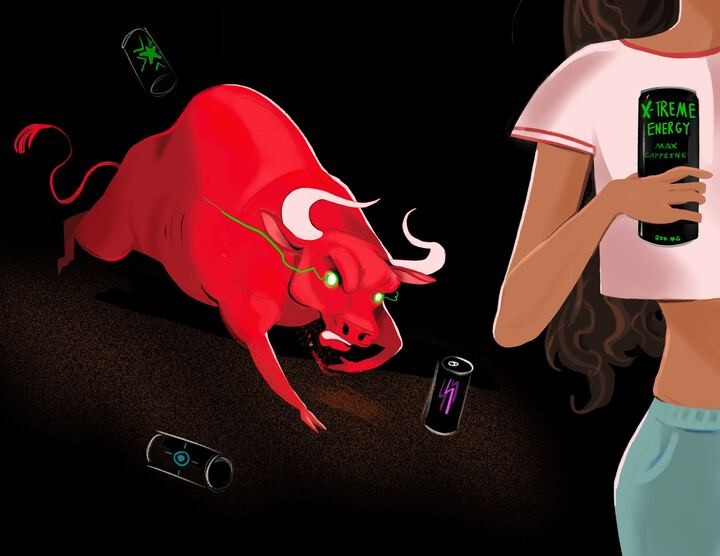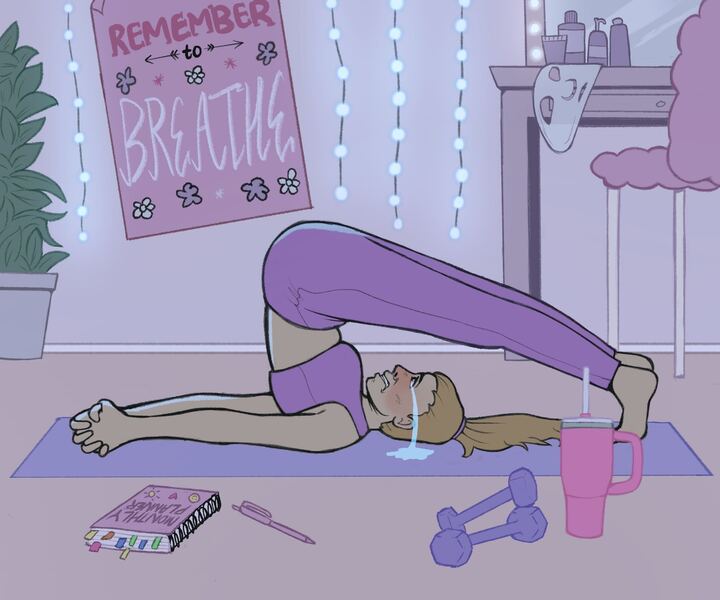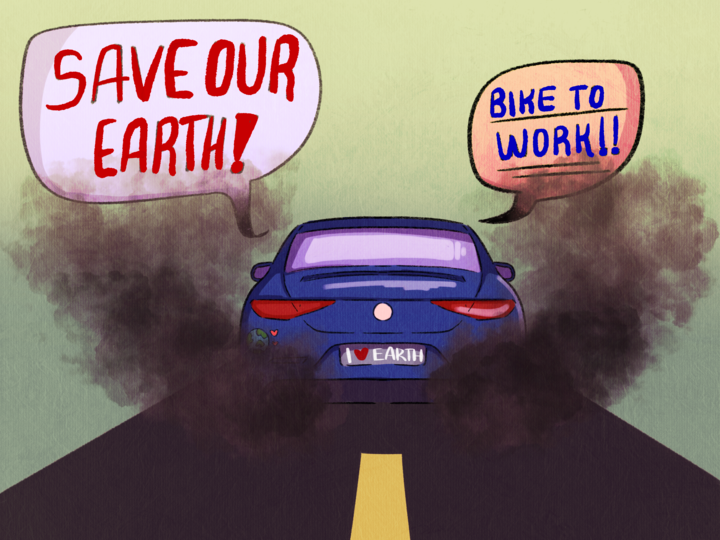Energy drinks have rapidly become more prevalent on college campuses. Since most students don’t get enough sleep, energy drinks offer consumers more caffeine so they can stay awake longer and be more alert. However, consistently drinking them can be extremely harmful.
The Centers for Disease Control and Prevention define an energy drink as “a beverage that typically contains large amounts of caffeine, added sugars, other additives, and legal stimulants such as guarana, taurine, and L-carnitine.” In 1997, Red Bull was introduced to the U.S., and since then, hundreds of other brands have been created and their primary market is college students.
Energy drinks are not regulated as food but as supplements, so manufacturers can add more caffeine. The Food and Drug Administration says 400mg of caffeine is the maximum amount a person should have daily without adverse health effects. But this is only for adults in pristine health and only for an occasional drink, not relying on them to make it through the day.
For context, a standard 12 oz. Red Bull has about 114 mg, and a 16 oz green Monster has 160mg. The energy drinks marketed as “healthy,” like Celcius and Alani Nu, have 200mg in their 12 oz. cans.
The obsession with these drinks is prevalent throughout campus. I don’t think there’s been a day where I don’t see multiple people drinking them. All markets on campus sell them, and I have seen people giving them out at the UA Mall for free.
Not only do energy drinks have a lot of caffeine, but their other ingredients are also unhealthy. They have a massive amount of sugar, and the American Heart Association recommends 36g of sugar for men and 25g for women. A standard Red Bull has about 38g, a green Monster has 54g, and Celsius and Alani Nu drinks are “sugar-free” but contain sucralose, an artificial sweetener.
Another thing taking over college campuses is the use of pre-workout. Like energy drinks, pre-workout offer a boost of energy to complete a workout. Most pre-workouts have the same ingredients as energy drinks, but some contain steroids banned by the NCAA. Most people don’t need pre-workout because they can receive energy from a balanced diet.
Energy drinks should not be mixed with alcohol. Since energy drinks have loads of caffeine, they can conceal the depressive effects of alcohol, causing the consumer not to realize how much they have had until it’s too late. Four Lokos were banned because they contained three stimulants, caffeine, taurine and guarana, and one depressant – alcohol, and they have since been rebranded only to contain caffeine and alcohol.
Drinking many energy drinks per week can have awful side effects, especially on your heart. They can cause heart palpitations, heart rhythm malfunctions and increased blood pressure and heart rate.
If minors drink energy drinks, there are even more ramifications, like insomnia, stunted growth and cardiovascular anomalies. Most energy drink companies have warnings on their websites saying their products are not recommended for children, but studies have shown that 67% of adolescents have consumed energy drinks.
There are many other healthier ways to get caffeine, like green tea, black coffee and dark chocolate.
I have fallen victim to consuming energy drinks a lot, especially during finals, to get an extra boost, but I try to stop myself because I have been addicted to them. They offer a temporary boost but can have lasting effects.
Follow Kelly Marry on Twitter

Kelly Marry (she/her) is a sophomore studying journalism and public relations. She loves to read and travel in her free time.










